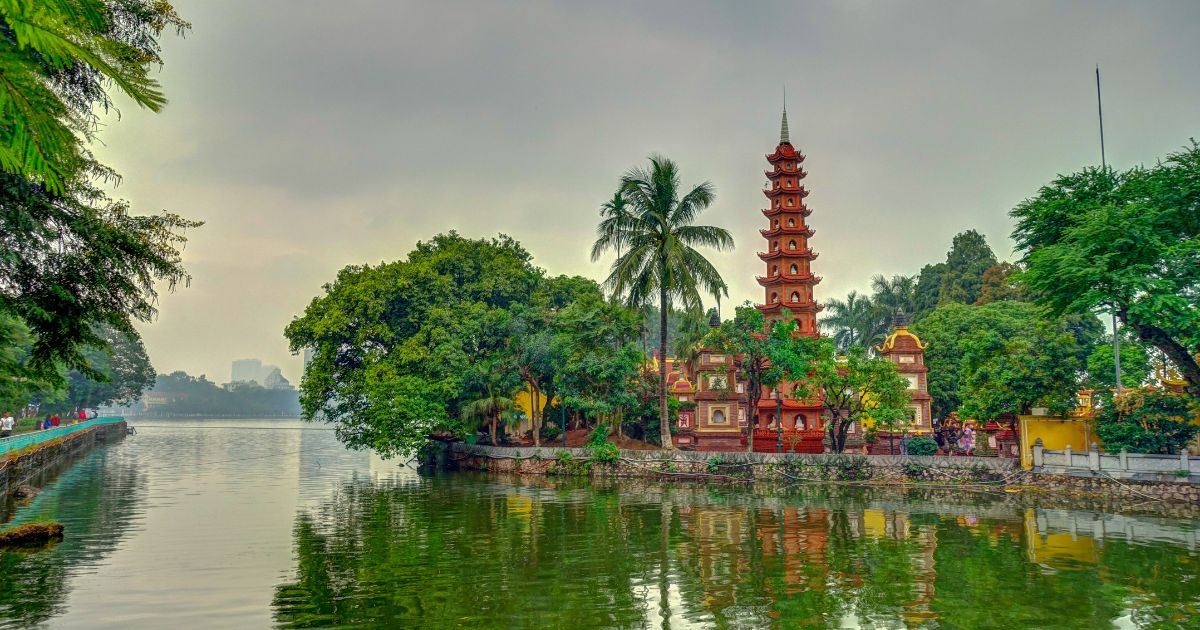The Allure of the Unseen: Why Your Next Southeast Asian Adventure Should Be Off the Beaten Path
Close your eyes and picture Southeast Asia. What do you see? Perhaps it’s the majestic silhouette of Angkor Wat at sunrise, the full moon parties of Thailand, or the bustling streets of Hanoi. These images are iconic for a reason—they are beautiful, vibrant, and have drawn travelers for decades. But they represent only a fraction of the story. Beyond the well-trodden tourist trails lies a Southeast Asia that is quieter, more intimate, and pulsing with an authenticity that can’t be found in a brochure.
This is the Southeast Asia of mist-shrouded limestone karsts seen from a slow boat, of shared meals in a family-run homestay, of undiscovered waterfalls, and of coastlines so pristine they feel like a secret. This is the difference between being a tourist and being a traveler. A tourist follows a checklist; a traveler follows their curiosity. Going off the beaten path isn’t about avoiding popular places entirely; it’s about seeking out the experiences that lie in between. It’s about trading crowds for connection, convenience for character, and predictability for pure, unadulterated adventure.
This guide is your compass to that other Southeast Asia. We’ll journey beyond the main hubs to explore hidden gems in Laos, Cambodia, Vietnam, and the Philippines. Prepare to leave the crowds behind and discover the soul of a region that still holds countless secrets for those willing to look.
Preparing for the Path Less Traveled: Pre-Trip Essentials

Embarking on an off-the-beaten-path journey requires a slightly different approach to preparation. Spontaneity is key, but a solid foundation will ensure you can embrace it without unnecessary stress.
Mindset & Flexibility
The most important item you’ll pack is your mindset. Things will not always go according to plan. A bus might be late, a guesthouse might be full, or a trail might be muddier than expected. Embrace these moments. They are not setbacks; they are part of the adventure. The ability to laugh, adapt, and find a new solution is the hallmark of a seasoned traveler.
Packing Smart, Not Heavy
You’ll be navigating smaller boats, motorbikes, and local buses. A massive suitcase is your enemy. Aim for a backpack of 40-50 liters.
- Versatile Clothing: Pack lightweight layers. Quick-dry fabrics are a godsend. Include at least one long-sleeved shirt and a pair of long pants for temple visits, mosquito protection, and cooler evenings in the mountains.
- Essential Gear: A reliable headlamp, a portable power bank, a universal sink plug, a basic first-aid kit (with extra blister plasters), and a reusable water bottle with a built-in filter are non-negotiable.
- Footwear: A sturdy pair of walking shoes or trail runners, a pair of comfortable sandals or flip-flops, and perhaps a pair of water shoes.
Visas, Insurance, and Health
Always check the visa requirements for your nationality well in advance. Some countries offer visas on arrival, while others require an application beforehand. Comprehensive travel insurance is an absolute must. It should cover medical emergencies, trip cancellations, and theft. Lastly, consult a travel doctor about recommended vaccinations and malaria prophylaxis for the specific remote regions you plan to visit.
Laos: The Land of a Million Elephants and Infinite Serenity

Laos moves at a different pace. It’s a country that invites you to slow down, breathe deeply, and simply be. While Luang Prabang is a gem, the real magic lies further afield.
Nong Khiaw & Muang Ngoi: River Life and Limestone Peaks
North of Luang Prabang, the Nam Ou River carves a dramatic path through a landscape of towering limestone mountains. The town of Nong Khiaw is the gateway to this region. While it has become more popular, it retains a rugged charm. The real prize is taking a slow boat further upriver to Muang Ngoi, a village accessible only by water. There are no cars here, just a single dirt path. It’s the perfect base for trekking to remote villages, exploring caves, and kayaking on the tranquil river. The views from the Pha Daeng Peak viewpoint are breathtaking and well worth the sweaty climb.
The Bolaven Plateau: Coffee Plantations and Cascading Falls
In southern Laos, the Bolaven Plateau is a highland region famous for its cooler climate, rich volcanic soil, and countless waterfalls. Renting a motorbike and doing the “small loop” or “big loop” is the best way to explore. You’ll drive through villages inhabited by ethnic minority groups, stop at family-run coffee plantations (ask for Mr. Vieng’s), and swim in the pools of spectacular waterfalls like Tad Lo and the immense Tad Fane. This is a journey that stimulates all the senses, from the smell of roasting coffee beans to the thunderous roar of falling water.
Cambodia: History’s Echoes Beyond Angkor

The temples of Angkor are a wonder of the world, but Cambodia’s story doesn’t end there. From its resilient people to its forgotten coastlines, there is so much more to discover.
Koh Rong Samloem: Finding Paradise on the Quieter Side
While its sister island, Koh Rong, is known for its party scene, Koh Rong Samloem offers a more tranquil slice of paradise. Saracen Bay is the main hub, but the real gems are the more secluded beaches. Take a jungle trek over to Lazy Beach for golden sands and stunning sunsets, or find a quiet bungalow on M’Pai Bay to experience the local fishing village life. At night, wading into the calm waters to see the bioluminescent plankton light up around you is a truly magical experience.
Kampot & Kep: Colonial Charm and Culinary Delights
Nestled along a river, the town of Kampot is a haven of crumbling French colonial architecture and laid-back vibes. It’s the perfect base to explore the surrounding countryside. A visit to a Kampot pepper plantation is a must—this pepper is prized by chefs worldwide for its unique flavor. You can also kayak on the river, explore the salt fields, or take a day trip to the nearby coastal town of Kep. Once a glamorous seaside resort for the French elite, Kep is now famous for one thing: its crab market. Enjoying fresh crab cooked with green Kampot peppercorns right by the sea is a culinary experience you won’t forget.
Vietnam: A Land of Contrasts, from Mountain Passes to Mekong Deltas

Vietnam is a country of incredible energy and staggering natural beauty. To truly feel its pulse, you need to get out of the cities and into its epic landscapes.
The Ha Giang Loop: An Epic Northern Motorbike Journey
This is not for the faint of heart, but for those with a spirit of adventure, the Ha Giang Loop is one of Southeast Asia’s ultimate road trips. Located in the far north, this 3-4 day motorbike journey takes you through a jaw-dropping landscape of winding mountain roads, deep canyons, and terraced rice paddies. You’ll pass through remote villages of ethnic minorities like the Hmong and Tay people, and the view from the Ma Pi Leng Pass is truly unforgettable. You can hire an “easy rider” (a local guide who drives) if you’re not comfortable on a bike yourself. It’s a challenging but profoundly rewarding journey into the heart of rural Vietnam.
Pu Luong Nature Reserve: A Glimpse into Rural Life
Often described as “Sapa without the tourists,” Pu Luong Nature Reserve is a stunning region of rice terraces, traditional villages, and lush forests. Located southwest of Hanoi, it offers an authentic glimpse into the agricultural life of northern Vietnam. The best way to experience it is by staying in a traditional stilt house homestay, trekking through the rice paddies, and marveling at the giant bamboo water wheels that gently irrigate the fields. It’s a peaceful, beautiful escape that feels a world away from the city hustle.
The Philippines: An Archipelago of Undiscovered Islands

With over 7,000 islands, the Philippines is the definition of an off-the-beaten-path destination. While Boracay and El Nido get the headlines, countless other islands offer equally stunning beauty with a fraction of the crowds.
Siargao: More Than Just a Surfer’s Paradise
Known as the surfing capital of the Philippines, Siargao has a magnetic, laid-back vibe that extends far beyond its famous Cloud 9 wave. Rent a scooter and explore the island’s endless coconut palm forests. Discover the incredible Magpupungko Rock Pools, which are only accessible at low tide. Take a boat trip to the pristine Sugba Lagoon for paddleboarding and cliff jumping, or venture to the nearby islands of Daku, Guyam, and Naked Island for a day of pure, white-sand bliss.
Port Barton: The Quieter, Eco-Conscious Alternative
If the crowds of El Nido seem daunting, head south on Palawan to the sleepy village of Port Barton. This is what El Nido was like 20 years ago. Electricity is still limited to certain hours of the day, and the pace of life is wonderfully slow. The island-hopping tours here are more intimate, taking you to deserted beaches and vibrant snorkeling spots where you have a good chance of swimming with sea turtles. Port Barton is a community focused on sustainable tourism, making it a perfect destination for the responsible traveler.
The Traveler’s Code: Tips for Responsible and Authentic Travel
Venturing off the beaten path comes with a responsibility to the places and people we visit. True authenticity is a two-way street built on respect.
- Engage with Humility: Learn a few phrases in the local language. “Hello” and “thank you” go a long way. Dress modestly, especially when visiting temples or rural villages. Always ask for permission before taking someone’s photograph.
- Support Local Economies: Stay in family-run guesthouses, eat at local restaurants (not just the ones in the guidebook), hire local guides, and buy handicrafts directly from the artisans.
- Leave No Trace: This is fundamental. Pack out everything you pack in. Refuse single-use plastics whenever possible. Be mindful of your water and electricity consumption in remote areas where resources are scarce.
- Eat Adventurously: Food is a direct line to culture. Be brave and try the street food. Visit the morning markets. Ask your hosts what their favorite local dish is. Some of your most memorable experiences will happen around a plastic table on a sidewalk.
Dig Deeper: Essential Travel Safety Tips Every Traveler Should Know
Conclusion: Your Path Awaits
The well-trodden path is popular for a reason, but it’s on the detours and side roads that true adventure is born. Southeast Asia’s greatest treasures are not just its ancient temples or famous beaches, but the warmth of its people, the serenity of its untouched landscapes, and the unexpected moments of connection that happen when you dare to get a little lost. This guide is merely a starting point. The real map is your own curiosity. So pack your bag, leave some room in your itinerary, and go find your own path. It’s waiting for you.







